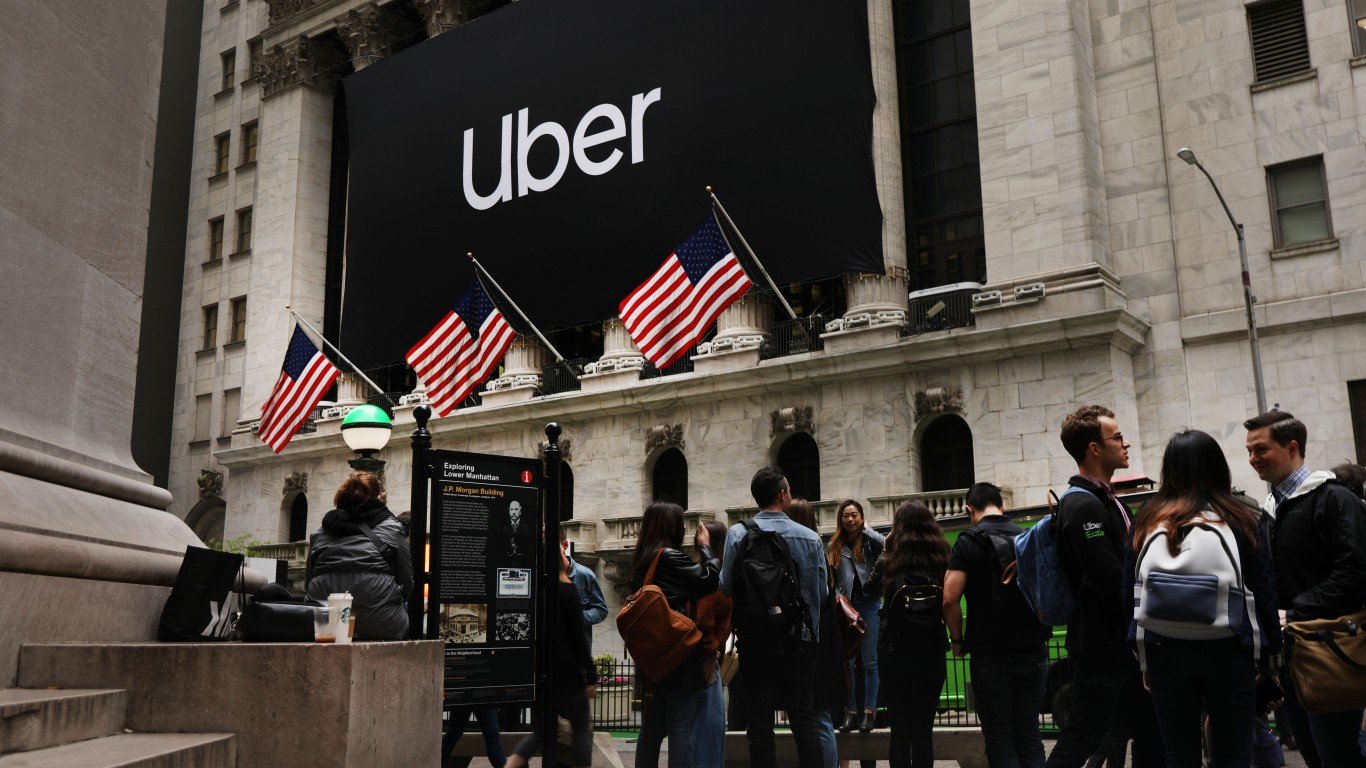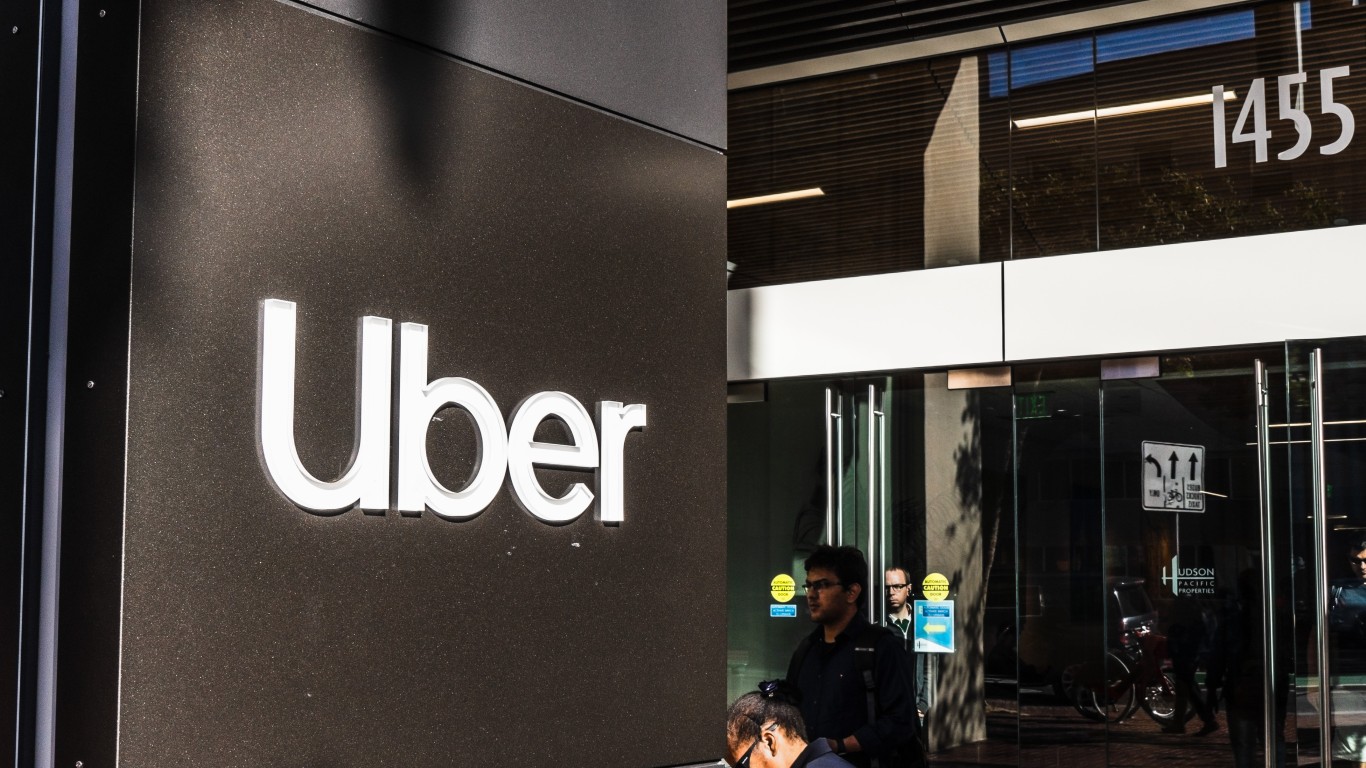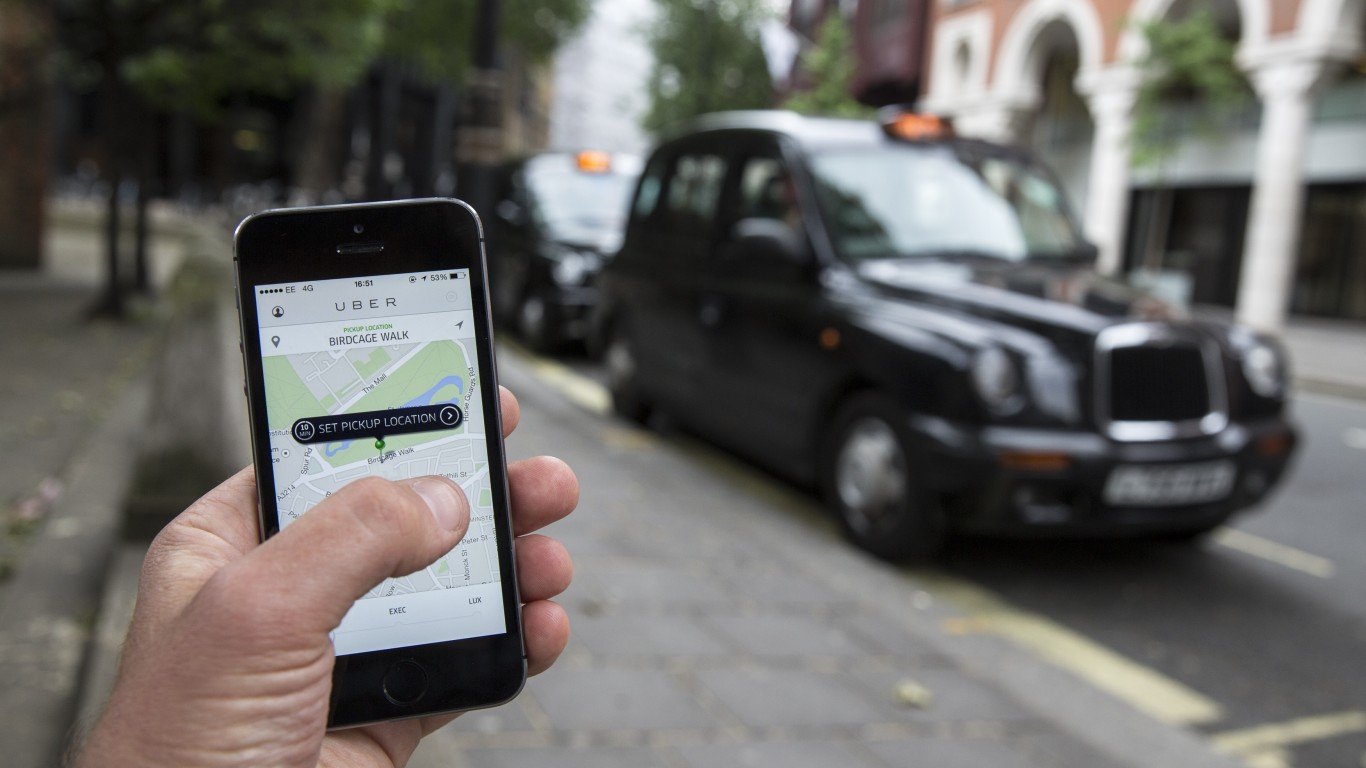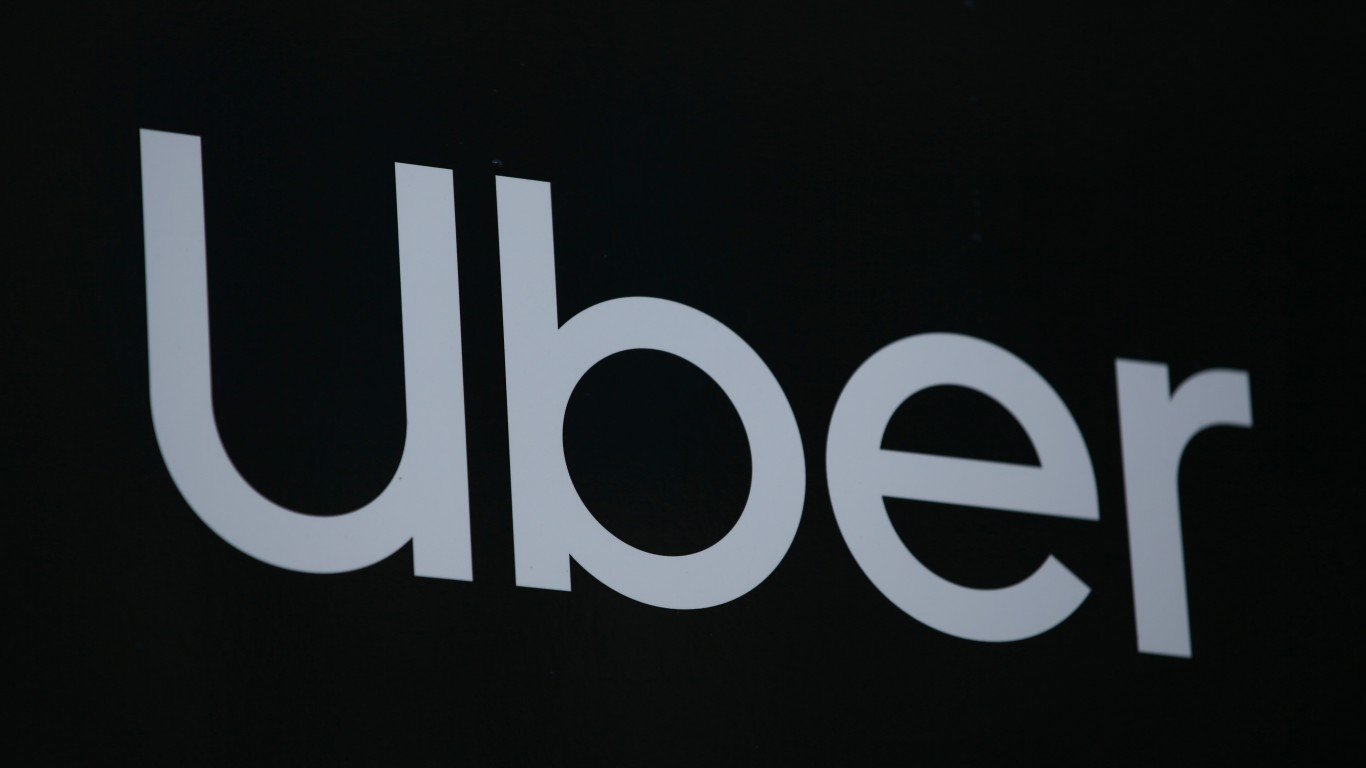

On May 10, 2019, Uber Technologies Inc. (NYSE: UBER) opened for trading on the New York Stock Exchange. The company had priced the stock at the low end of its $44 to $50 range, and the first trades were made at $42. Hardly an auspicious beginning.
Uber raked in $8.1 billion at the IPO, valuing it at around $75 billion. At the time, it was one of just 53 U.S.-listed firms worth at least $10 billion at their IPOs to see its share price drop on the day of their IPO.
Uber’s first four years

In its first full year as a public company, Uber reported a net loss of $8.5 billion. In its fourth year, the company reported a loss of $9.1 billion.
2019
- Revenue: $13.0 billion
- Net profit/loss: -$8.5 billion
- Gross margin: 35.7%
- Operating cash flow: -$4.3 billion
- Free cash flow: -$4.9 billion
2020
- Revenue: $11.1 billion
- Net profit/loss: -$6.8 billion
- Gross margin: 38.9%
- Operating cash flow: -$2.7 billion
- Free cash flow: -$3.4 billion
2021
- Revenue: $17.5 billion
- Net profit/loss: -$496 million
- Gross margin: 35.6%
- Operating cash flow: -$445 million
- Free cash flow: -$743 million
2022
- Revenue: $31.9 billion
- Net profit/loss: -$9.1 billion
- Gross margin: 30.7%
- Operating cash flow: $642 million
- Free cash flow: $390 million
In the early years, Uber’s growth plans were costly, and many did not work out. By fiscal 2022, the company had to absorb $9.1 billion in losses, including $7 billion in charges related to bad investments.
For the 2023 fiscal year ending in December, analysts expect Uber to post sales of $37.2 billion and $1.31 in EPS. That’s a year-over-year increase of 16.5% in revenue and a leap from the 2022 loss per share of $3.32. Uber’s future is definitely brighter than its past.
Projected 2030 stock prices for Uber

Our predicted prices for Uber stock in 2030 are $103.50 (base), $240.00 (bull), and $93.20 (bear). We’ll break down each of these scenarios in more detail below.
Base case for Uber

After nearly five years as a publicly traded company, Uber remains a growth company that pays no dividends and has yet to repurchase any stock. But a buyback may be in the near future. CEO Dara Khosrowshahi hinted at a buyback on the second-quarter conference call. It hasn’t happened yet, however.
Last year’s enormous losses were unrealized losses due to write-downs of investments in other companies. Cash flow from operations has been positive in all three quarters of 2023 and totals $2.52 billion over the past four quarters. Free cash flow has also been positive for three consecutive quarters and totals $2.29 billion for the past four quarters.
Uber’s November 2021 acquisition of freight hauler Transplace for $2.25 billion has contributed $5.4 billion to year-to-date revenue of $23.3 billion. The delivery business is up 34% year over year for the first three quarters of 2023 and the ride-share business is 124%.
Over the next two fiscal years, profits will grow by around 40% in both years according to consensus estimates. Revenue will rise by around 16% each year. That suggests 2025 revenue of about $49.9 billion. The price/sale multiple for the next 12 months is 3.1x, below the 4-year average of almost 4x.
Using conservative estimates for annual forward P/S multiple of 3, around 2.06 billion shares outstanding, and annual revenue growth of 10% between 2026 and 2030, Uber’s share price in 2030 would rise by around 70% to $103.50. That’s our base case for the 2030 share price.
Bull case for Uber

Uber joined the S&P 500 Index on Monday. That means passive index funds will be buying the company’s stock, a positive catalyst for the share price going forward. The company fired 6,700 people in 2022 and around 300 more this year, cutting 3 percentage points off its year-over-year operating costs.
Although the freight business is contributing to the company’s top line, freight shipments across the industry have been down this year. Weak pricing is expected to continue through next year and could linger into 2025 as well.
Analysts anticipate a share buyback. That will give the shares a jolt. Expansion beyond its current 70 countries and 10,500 cities would signal that Uber wants to continue growing as it increases its return to shareholders.
Since becoming a publicly traded company, Uber has posted a total return to investors of around 47%. Rival Lyft, which came public a month before Uber, has posted a negative return of 80% since its IPO. China’s Didi Global has dropped almost 75%, and Singapore’s Grab is down 73%. None of Uber’s competitors present a near-term threat to its business.
Let’s assume that the share price increases to $65 (about 6.6% above the current level) and that Uber initiates a $500 million buyback program based on 2.05 billion shares outstanding. That boosts the total return to investors by around 1.5%.
Assume revenue growth in 2024 and 2025 of 20%, tapering to 18% between 2026 and 2030. In 2030, revenue would rise to $164.5 billion. Assuming no further share buybacks, Uber’s share price could rise to $240, about 4x its current level
Bear case for Uber

Uber won a battle with its drivers earlier this year when a Califonia appeals court ruled that the drivers are independent contractors, not company employees. But that only applies to the U.S. Courts in France, Switzerland, Spain, and the Netherlands have ruled that drivers are employees, entitling them to benefits and raising Uber’s costs.
In 2022, 76% of Uber trips took place outside the United States. In its 2022 10-K, the company listed 19 international risks to its business. These include restrictive laws and regulations, political instability, and costs.
Likewise, driver unionization remains a threat. In June, the National Labor Relations Board issued a ruling in a separate case that makes it easier for workers to show that they are employees, not contractors. A Massachusetts state senator recently introduced legislation that would allow drivers to form unions.
In our base case, we assumed annual revenue growth of 40% in 2024 and 2025, based on the average of a couple of dozen of analysts’ estimates. For 2026 to 2030, we estimated annual revenue growth of 10%.
For the bear case, assume revenue grows at a rate of 8%, yielding revenue of $73.3 billion in 2030. That pencils out to $93.20, our bear-case price for Uber stock in 2030.
Sponsored: Attention Savvy Investors: Speak to 3 Financial Experts – FREE
Ever wanted an extra set of eyes on an investment you’re considering? Now you can speak with up to 3 financial experts in your area for FREE. By simply
clicking here you can begin to match with financial professionals who can help guide you through the financial decisions you’re making. And the best part? The first conversation with them is free.
Click here to match with up to 3 financial pros who would be excited to help you make financial decisions.
Thank you for reading! Have some feedback for us?
Contact the 24/7 Wall St. editorial team.



